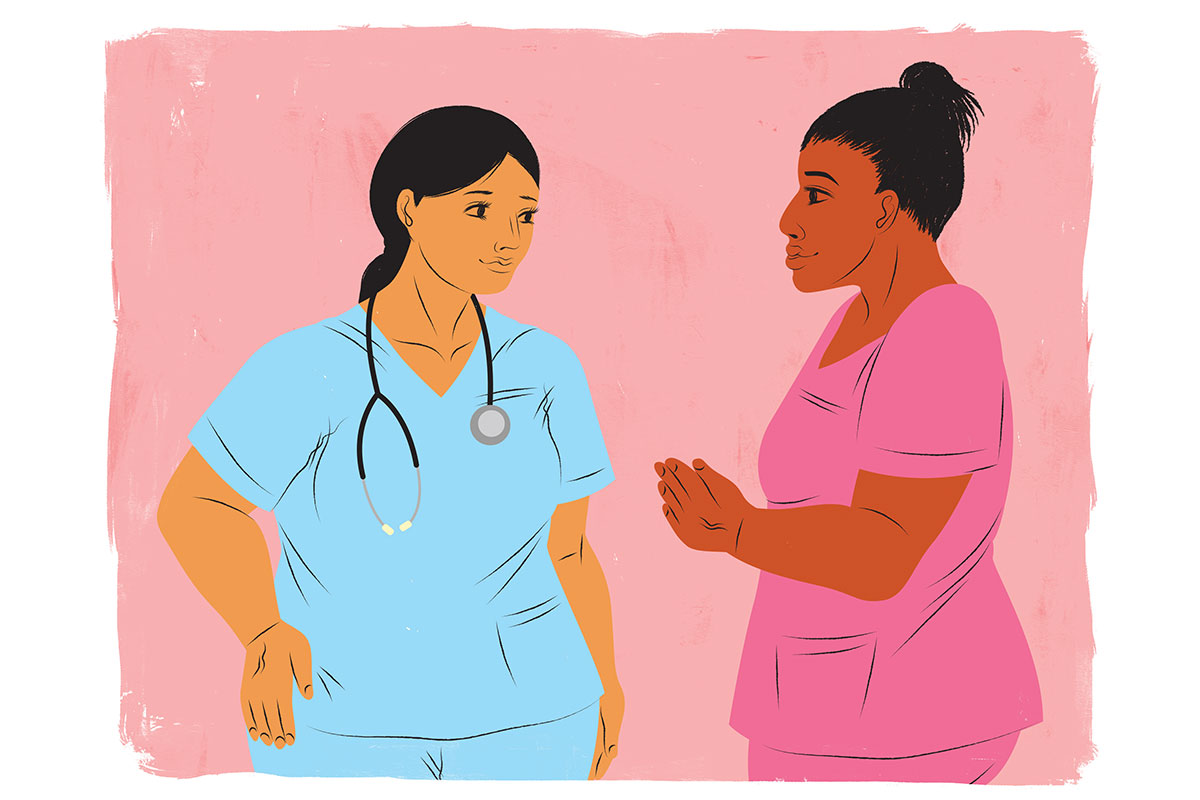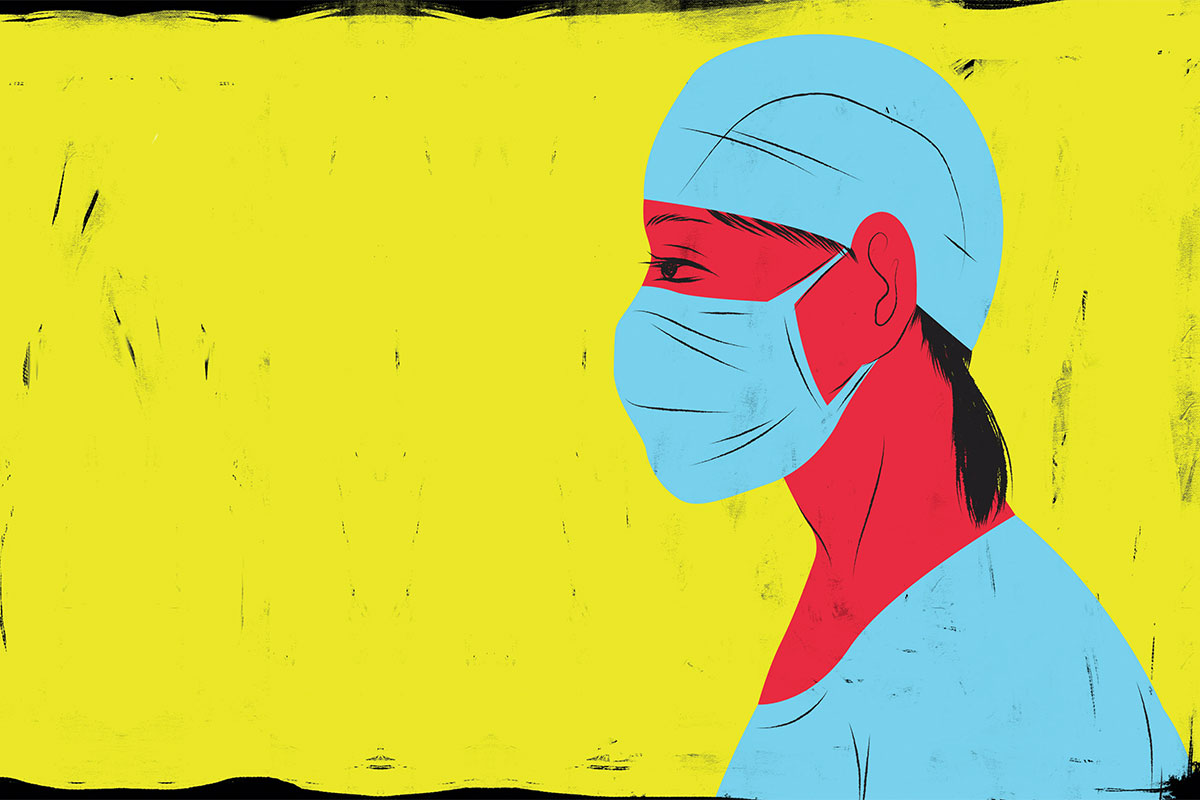Across the United States, hospitals and other medical facilities are facing a serious shortage of one of the most essential resources in the health care field: nurses. Driven by pre-existing structural factors within the field and exacerbated by pandemic-related stressors, nurses are leaving the profession in droves, and institutions are struggling to find replacements.
After three years of dealing with the impacts of the COVID-19 pandemic, nurses have been left feeling overworked and burned out.
“Our nurses are tired, they’re stressed, they’re burnt out. Not just our nurses, but all health care workers,” says Mesha Jones, the Virginia Nurses Association’s commissioner of nursing practice.
About 100,000 registered nurses have left the field in the past two years, citing stress, burnout, and retirement, according to an April 2023 study from the National Council of State Boards of Nursing, and another 799,350 registered nurses said they intended to leave the workforce by 2027. Of those who reported an “intent to leave,” almost 189,000 are younger than 40.
“The data is clear: The future of nursing and of the U.S. health care ecosystem is at an urgent crossroads,” says Maryann Alexander, NCSBN chief officer of nursing regulation. “The pandemic has stressed nurses to leave the workforce and has expedited an intent to leave in the near future, which will become a greater crisis and threaten patient populations if solutions are not enacted immediately.”
An Aging Workforce
While the pandemic has driven the problem to an extreme, staffing shortages have been developing for a long time. Hospitals already faced problems that made it difficult to build and retain the health care workforce before the pandemic, the American Hospital Association told the U.S. Senate in February.
One of the biggest challenges that the health care field faces is a workforce that is nearing retirement. Although the median age of RNs in 2022 fell to 46 from 52 two years earlier, 31 percent of RNs are still 55 or older, according to a National Nursing Workforce Survey conducted by the NCSBN and the National Forum of State Nursing Workforce Centers.
And the problem could get worse for hospitals and other health care facilities. Federal economists with the U.S. Bureau of Labor Statistics predict that the nation will need 203,000 registered nurses every year through 2031, not only because nurses have left the field, but because the population is aging and more nurses will be needed to care for patients with chronic conditions, such as obesity and diabetes.

Teacher Shortage
The exodus of nurses has created a demand for new nurses that nursing schools can’t meet. Though students express an interest in nursing as a career, nursing programs don’t have enough available slots and have to turn away qualified applicants.
U.S. baccalaureate nursing programs turned away 91,938 qualified applications in 2021, because of insufficient faculty, clinical sites, and classroom space, as well as budget constraints, according to a report from the American Association of Colleges of Nursing.
“It’s a whole circle. You need more new nurses coming in,” Jones says. “But if you don’t have enough educators to educate the new nurses, then you’re not going to have enough new nurses to come in. And we’re at the point that we can’t keep up because we need more educators as well.”
One significant factor is that individuals with the credentials necessary to teach nursing aren’t willing to take the pay cut to move into a job in education. The AACN reports the median salary for an advanced practice registered nurse is $120,000, while the average salary for master’s-prepared professors in nursing schools is $87,325.
Patient Impact
Patients feel the ripple effect of the nursing shortage. An understaffed hospital can lead to long wait times and higher occupancy rates, which translate to nurses being stretched thinner and thinner.
“Patients will be impacted by longer wait times. They may not feel that they get the attention. They’ll still get the care, but that one-on-one attention that we like to provide for patients — that may fall back,” says Jones. “You want to provide your patients with the best care that you can, but when you don’t always have the staffing that you need, or that you feel is appropriate, that reduces the quality of care because you can’t spend the time that you want with your patient.”
In Virginia, this issue is at the forefront of people’s minds. A 2022 Virginia Hospital and Healthcare Association poll found that health care workforce shortages were among the most cited public health concerns, second only to community violence and crime. And 25 percent of respondents said that shortages remained their No. 1 concern.

What’s Next?
So what can be done to increase the workforce and improve conditions for nurses? “We truly have to get down to the root cause of the nursing shortage,” Jones says. “What does that look like for those within an organization, like within the health system organization [or] within academics? How are we making it possible for those who want to go to nursing school to actually go, to help with the shortage?”
To work toward a solution, she says that the Virginia Nurses Association collaborates with nurses and nurse-affiliated organizations to gain an understanding of their needs, and to advocate for legislative change.
One such goal is to advocate for preceptor incentives, like the one offered by the Virginia Department of Health that provides an additional incentive pay for practitioners who serve as preceptors for students, supervising them during clinical rotations.
Another way organizations are working to combat the shortage is by allowing nursing students to assist the current workforce. These programs, often called Earn While You Learn, give students an opportunity to get hands-on educational experience, while helping nurses who need extra support.
Mary Washington Healthcare and Germanna Community College take part in one of these programs, which can onboard two cohorts of up to 60 nursing students per year who work from 12 to 20 hours per week, according to the American Hospital Association.
UVA Health also offers an Earn While You Learn program. Students with a high school diploma or GED can enroll to work as EMTs, CNAs, and pharmacy technicians. During these six- to 12-week programs, they receive both coursework and on-the-job training.
To support Virginia nurses, the Virginia Hospital and Healthcare Association launched the On Board Virginia website, which provides information about health care career paths, details about educational opportunities, and job postings.
Ultimately, Jones says the most important thing people can do to support nurses is to talk with them, to understand their day-to-day challenges, and to comprehend the essential impact that they have.
“We need the public to support us as professionals, and then once you enter the organization, regardless of if we’re short staffed, you will receive the best care ever,” Jones says. “Give us grace and space, and we can all get through this together. It’s just going to take time.”
Feature image, stock.adobe.com
This story originally ran in our August issue. For more stories like this, subscribe to Northern Virginia Magazine.





